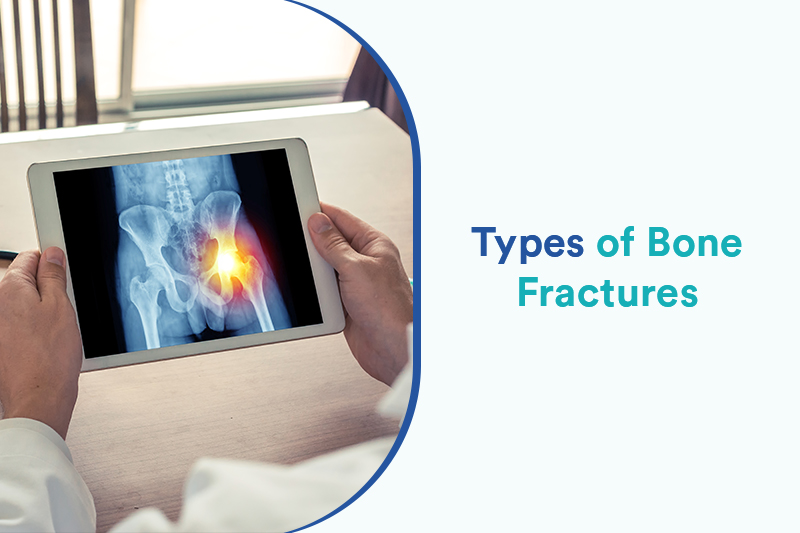Bone Fractures constitute a major part of Orthopaedics for UnderGrads. There are various Orthopaedics courses online that provide an in-depth understanding of fractures, their type, treatment and management.
When the force applied to a bone is greater than the bone can withstand, a shattered bone or bone fracture occurs. This affects the bone’s strength and structure, causing pain, functional disability, and occasionally bleeding and damage. A form of connective tissue, bones are strengthened by calcium and bone cells. The softer centre is known as the bone marrow, where blood cells are created.
There are various causes of bone fractures, such as:
- Traumatic events like falls, car accidents, and sports-related injuries.
- Diseases like osteoporosis and some cancers make bones more prone to breaking.
Different Types of Bone Fractures:
- Closed (Simple) Fracture: When a bone fractures, the skin is not punctured or exposed, resulting in a closed fracture.
Treatment – Although surgery may still be necessary for closed fractures to be properly treated, this operation is typically not as urgent and can be done in the days or weeks after the event.
- Open (Compound) Fracture: An open fracture is one in which the bone penetrates the skin before retreating into the wound and becoming invisible.
Treatment – Surgery is almost always used to treat open fractures. As soon as possible, schedule an appointment for surgery so that your open wound can be cleaned and treated to lessen the risk of infection.
- Greenstick Fracture: It is a partially thick fracture in which the periosteum and cortex of the bone are interrupted on only one side of the fracture while remaining intact on the other. Long bones like the fibula, tibia, ulna, radius, humerus, and clavicle are where they most frequently appear.
Treatment – These fractures have a significant chance of entirely breaking through the bone, so they are typically immobilised in a cast while they heal. Sometimes, especially if the break is mostly healed, your doctor may decide that a detachable splint would be just as effective.
- Hairline Fracture: A little crack or significant bruising within a bone is referred to as a hairline fracture, also known as a stress fracture. Athletes are most susceptible to this ailment, particularly those who participate in sports that require running and jumping.
Treatment – Resting, icing, compression and elevation help in this fracture. It is recommended to keep weights away or it may be necessary to have surgery on some hairline fractures so that pins or screws can be added to support the bones and hold them together while they mend.
- Complicated Fracture: The fracture’s surrounding structures get injured in this type of fracture. The periosteum, the lining of the bone, as well as the veins, arteries, or nerves, may also be harmed.
Treatment – Includes surgically inserting metal rods or plates to hold the broken bone parts together or immobilising the bone with a plaster cast. Surgery and surgical traction may be required for some severe fractures.
- Comminuted Fracture: Trauma is the main cause of comminuted fractures. Car accidents and falls from a great height, such as those off a ladder or roof, are two of the most frequent causes. The bone is broken into tiny fragments. This kind of intricate fracture usually heals more gradually.
Treatment – The type of bone that has been broken determines how to fix a comminuted fracture. The majority do, however, need surgery. Surgery often entails open reduction, in which the bones are repositioned and internally fixed with screws and rods.
- Avulsion Fracture: It occurs when a little bone fragment that is connected to a tendon or ligament is pushed away from the major bone fragment.
Treatment – Avulsion fractures are often treated by resting and icing the injured area, then performing gentle workouts to increase muscle strength, enhance range of motion, and hasten bone healing. The majority of avulsion fractures heal successfully without surgery.
- Compression Fracture: This happens when two bones are pressed up against one another. This kind of fracture can occur in the vertebrae, the spine’s bones. Older persons are more vulnerable, especially those who have osteoporosis.
Treatment: A back brace, medication, rest, or physical therapy are possible treatments. Surgery is sometimes required. Regular weight-bearing activities that build strength and balance drills that lower the chance of falling can lower the risk of new fractures.
Check out Dr. Vivek Pandey’s Orthopaedics Course for UnderGrads to know more about the subject and learn the intricacies of Orthopaedics in MBBS.









